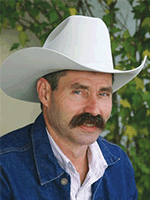
Ask the Expert: Bottles or Pails? – Dr. Max Thornsberry, Milk Specialties Global
 By Dr. Max Thornsberry, Milk Specialties Global dairy technical specialist
By Dr. Max Thornsberry, Milk Specialties Global dairy technical specialist
Question: Should I feed my calves milk with bottles or pails?
Answer: Calf raisers should weigh the potential benefits and disadvantages of feeding milk via a bottle, nipple bucket or open-top bucket. Calves are designed by nature to suckle a nipple, and suckling is mentally satisfying to calves of all ages. Many calves will actively seek something to suckle after consuming their milk or milk replacer meal from a bucket or open pail in order to satisfy this desire to suckle.
Unfortunately, for calves housed together, this suckling desire is often exercised on a penmates’ udder, ears, or navel, with clinically recognized negative consequences. Calves can continue to suckle a nipple on an empty nipple bucket or nipple bottle, which seems to satisfy their suckling desire. This cross-suckling issue is why many veterinarians advise their clients to house milk- or milk replacer-fed calves separately.
Calves usually need to be trained to drink out of a bucket, but will readily nurse from a nipple. Part of the suckling mechanism involves the calf extending its tongue forward and forming a semi-circle with the surface of the tongue, forcing the nipple between the tongue and the hard palette. This allows for a suckling action that forces milk or milk replacer out of the nipple through a combination of squeezing the nipple between the tongue and hard palette, and sucking the milk or milk replacer out of the nipple onto the distal surface of the tongue, where the liquid is swallowed into the esophagus. The esophagus, through muscular action, moves the liquid bolus down in stages of muscle contractions into the rumen or the esophageal groove.
Drinking from a bucket accomplishes the same general action, but suckling is not part of the muscular and physiological process. The calf must learn to force milk, or milk replacer, through the mouth, into the oral cavity, and then into the esophagus. In essence, the calf learns to use the oral cavity like a big straw. This is a learned process that some calves will not master until they’re several days old. For this reason, some calf raisers feed calves on a bottle and nipple for several days after birth, and then spend the time to train calves to drink out of a bucket.
Feeding calves from an open pail is a matter of convenience. Many growers have proven their calf husbandry skills. They take special care to ensure fluid milk replacer is presented in buckets in near-precise quantities, minimizing variation between meals. They also only increase milk feeding when an individual calf can handle the extra nutrition without increased stress.
In summary, whether utilizing a bottle, nipple bucket or open top pail, make sure the calf feeding staff is trained to consistently feed targeted quantities of milk or milk replacer. Make feeding changes gradually and closely observe how individual calves respond to the changes. Check the feeding system allows for proper equipment cleaning and sanitation between feedings. With bottles or nipple pails, make sure the nipple is presented to the calf below the level of its eyes to avoid inadvertent spillage of liquid into the trachea, potentially increasing the risk for calves to develop aspiration pneumonia.
Your turn: Looking for expert insight for your calf program or farm business? Email us with your question and, if it’s selected for a future edition of Starting Strong, you will earn a $100 gift card.
| Category: |
Equipment Starting Strong - Calf Care |

